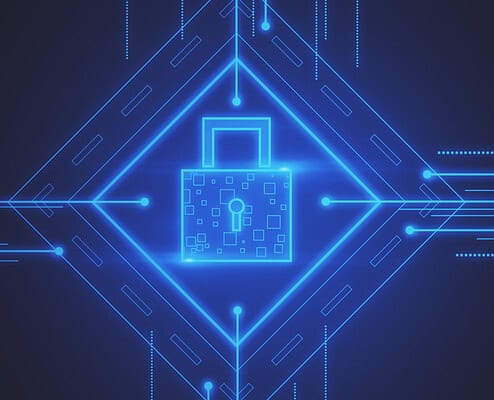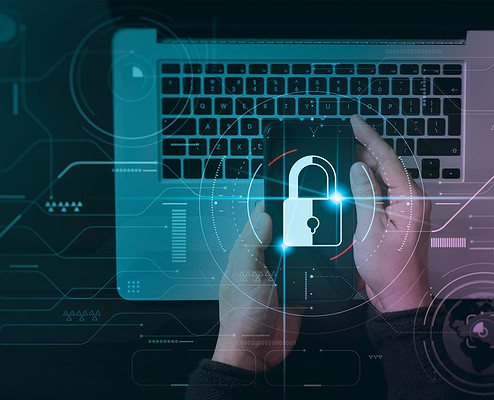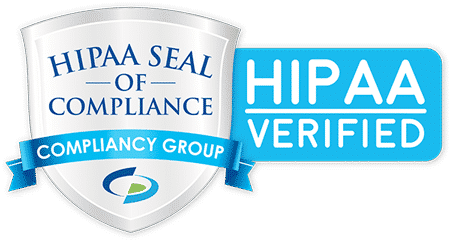
How to Maintain Cybersecurity Compliance
If you’ve been thinking about your business’s IT infrastructure lately, it’s time to consider how well your company’s network abides by cybersecurity compliance regulations.
Keep reading this guide to learn:
- What cybersecurity compliance is
- The most common cybersecurity frameworks
- The importance of cybersecurity
- How to identify the type of cybersecurity compliance you need to follow
- How to create a compliant cybersecurity plan
What Is Cybersecurity Compliance?
Cybersecurity compliance is a method of organizational risk management that encourages businesses to adhere to a standard of predefined security measures. These standards ensure that data confidentiality is efficiently and securely managed. Commonly, companies must abide by general data protection regulations that minimize the chance of data breaches.
A comprehensive cybersecurity system is beneficial for an organization. It creates a framework for approaching software and hardware issues from a defensive point of view that can anticipate and remove vulnerabilities. With methods like continuously monitoring security controls to anticipate the threat of cyberattacks, effective cybersecurity protects companies, their employees, consumers, and other key stakeholders.
But if a company’s cybersecurity standards don’t align with compliance regulations, a business leader’s efforts to maintain a strong line of security for their network infrastructure could end up working against them. Companies risk massive data breaches and regulatory fines without the backing of heavily regulated, industry-mandated security standards.
Common Frameworks for IT Security Compliance
There are many cybersecurity frameworks that intend to reduce cyber risk. These documented processes lay out the guidelines, standards, and best practices for ensuring the most efficient cybersecurity risk management while limiting an organization’s exposure to weaknesses and vulnerabilities that cybercriminals could exploit.
Cybersecurity frameworks have several types—control, program, and risk—and even more individual frameworks business leaders can choose from for their IT infrastructure. Some of the most common frameworks for IT security compliance are:
- The NIST Cybersecurity Framework – This framework was designed during the Obama administration to protect the United States’s critical infrastructure from cyberattacks. It practices a five-function model to identify, protect, detect, respond, and recover to ward off cyberthreats.
- The International Standards Organization (ISO) 2700 Series – This cybersecurity framework, also commonly referred to as ISO 270K, is widely recognized as the international cybersecurity standard. To function, it assumes the organization has a dedicated Information Security Management System (ISMS) because it requires management to oversee the organization’s security risks.
- The Center for Internet Security Critical Security Controls (CIS) – This compliance guideline is ideal for companies starting with small network infrastructure goals. Its framework gradually moves from foundational to organizational cybersecurity guidelines and uses the standards from more established frameworks like NIST for guidance.
- The Health Insurance Portability and Accountability Act (HIPAA) – One of the most well-known compliance frameworks, HIPAA mandates guidelines for ensuring confidential patient and consumer data. This documented process is crucial for healthcare providers and insurers and protects electronic healthcare information.
- The Payment Card Industry Data Security Standard (PCI DSS) – PCI DSS is an information security standard that was created in response to increased credit card fraud. It originally started from five major credit card brand security programs: American Express, Discover, MasterCard, Visa, and JCB International. It mandates a specific level of security compliance for financial service providers and merchants.
PCI DSS has six requirements for compliance:- Building and Maintaining a Secure Network and System
- Protecting Cardholder Data
- Implementing Strong Access Control Measures
- Monitoring and Testing Networks
- Maintaining an Information Security Policy
- The Cybersecurity Maturity Model Certification (CMMC) – This framework was created to standardize cybersecurity measures across the Defense Industrial Base (DIB). Unlike other maturity models, CMMC is both a mandate for organizations that solicit DoD contracts and a set of best practices. It contains five maturity levels depending on whether an organization collects, transmits, stores, and processes its Federal Contract Information (FCI) or Controlled Unclassified Information (CUI).
We know the cybersecurity landscape is constantly changing. Net3 IT’s managed IT services will help you stay on top of your IT compliance needs.
The Importance of Cybersecurity Compliance
As previously established, cybersecurity compliance is essential for ensuring adequate security and minimizing the risk of data breaches. But maintaining strong cybersecurity for your organization’s IT network is valuable for many more reasons.
At the very least, your business’s overall success relies on the strength of your network’s security. Cybercriminals are crafty, and at this point, every company that has a centralized network is at risk for cyberattacks. Whether your organization is small with a team of five people or you’re leading a large business with hundreds of moving parts, improper infrastructure management exposes your assets in easily exploitable ways.
Making an effort to align with cybersecurity compliance regulations can grant you benefits like:
- The lesser likelihood of errors within the compliance risk assessment process
- A greater reputation for your company as it’s known to abide by industry standards
- Being able to avoid the financial loss of regulatory fines and other penalties that follow after a data breach
- The monetary payoff from having invested in a reliable cybersecurity framework
How to Build a Compliant Cybersecurity Plan
Creating a comprehensive plan for cybersecurity compliance may seem like a complicated task, but the process can be organized into a few simple steps. If you’ve already assessed your industry and the type of security threats that your organization is most vulnerable to, you’re off to a great start. But you should find that a particular model for compliance is even more helpful.
- Start by creating a compliance team that designates tasks and helps maintain a healthy cybersecurity environment.
- Establish security controls to help your company minimize risk, like network firewalls, data encryption, employee training, data monitoring, and incident response plans.
- Document policies and procedures with instructions for handling future security issues.
- Establish regular routines for 24/7 monitoring that identifies risks.
Net3 IT Can Help You Maintain Cybersecurity Compliance
If maintaining your organization’s cybersecurity compliance is too much to take on alone, you can rely on Net3 IT. Serving the Knoxville, Tennessee area and other surrounding cities, our highly qualified team of consultants will provide you with all the proper technical solutions.

About Us
Since 2012, Net3 IT has offered enterprise-level IT experience and industry knowledge to help Knoxville businesses make the right decisions. We are committed to our customers’ success by providing cost-effective, high-value IT services, VOIP phone services, and strategic consulting.



